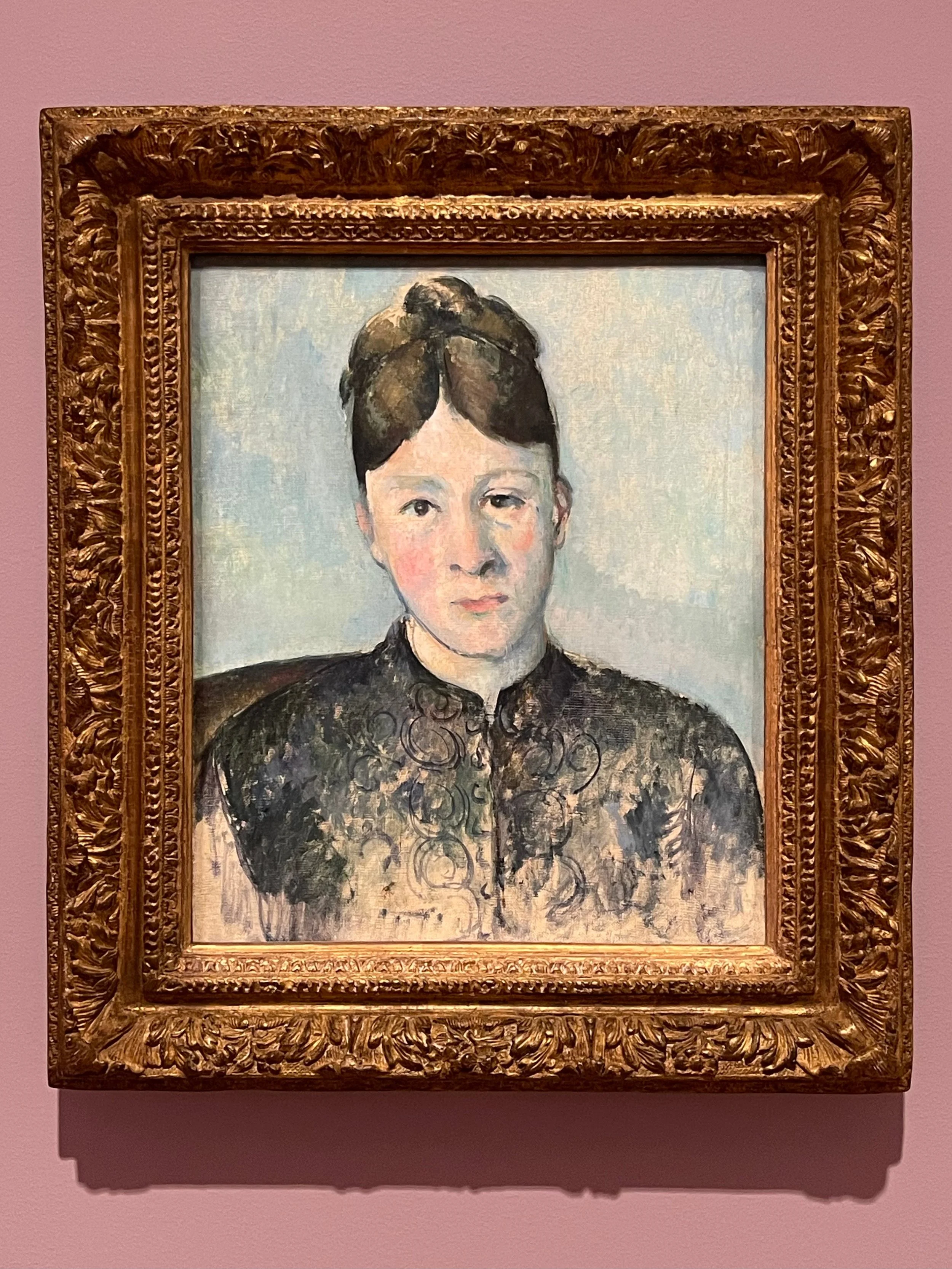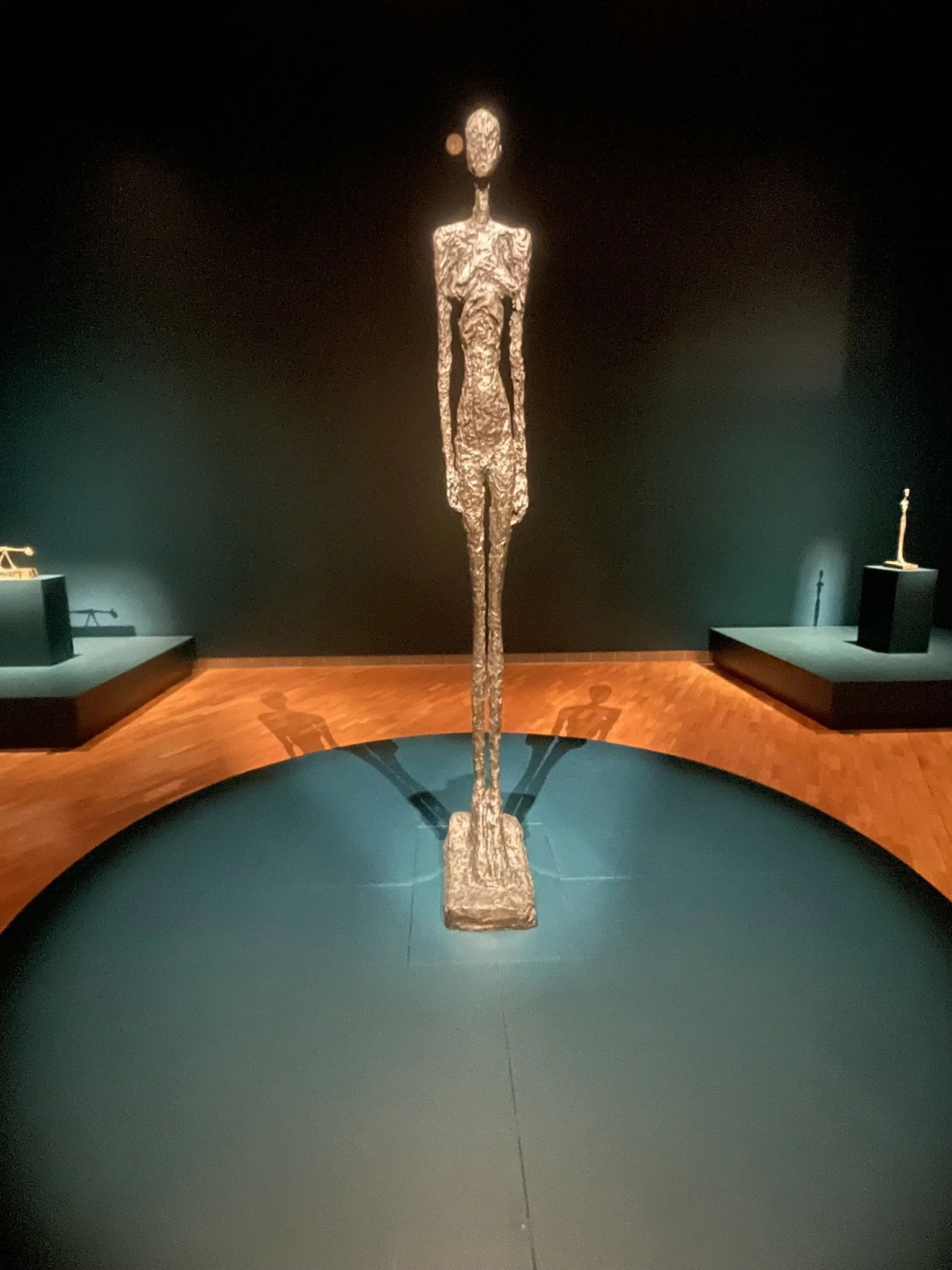Cézanne to Giacometti: A Lineage of Rebellion and Reinvention National Gallery of Australia, Canberra
Cézanne to Giacometti: highlights from Museum Berggruen / Neue Nationalgalerie
On show at the National Gallery of Australia until 21 Sep 2025
When a selection of artistic heavyweights goes on display, a three-hour drive from Sydney to Canberra feels like a small price to pay for the chance to stand before works that have changed the way we see art. Once considered shocking or dubious in their refinement, these artworks are now studied by art history students in lecture theatres around the world and fill the shelves of countless bookshops. Not having to travel overseas to see a collection like this is one of the great privileges offered by institutions like the National Gallery of Australia. As the saying goes, we are spoilt with riches.
Cézanne to Giacometti, on loan from Berlin’s Museum Berggruen and Neue Nationalgalerie, is more than just a gathering of major names from European art history. The exhibition explores the development of change in how artists challenged older conventions and looked for new approaches to the human figure. At the exhibition’s centre, there is a shift in how we think about the sitter, not simply as someone to be observed but as someone who shaped the work through their presence and relationship with the artist.
Portrait of Madame Cézanne, 1885, by Paul Cézanne
It opens with Paul Cézanne, and rightly so. His Portrait of Madame Cézanne (1885) (Marie-Hortense Fiquet) isn’t an expressive portrait. It’s composed, restrained, and held back. Hortense, his wife and frequent model, appears calm but distant. Cézanne builds her form through repeated brushstrokes and soft tonal shifts rather than detail. Instead of showing affection or emotion, he presents a quiet study of structure. What once seemed cold now feels essential; this was the beginning of modernism turning away from representation and towards sensation. That shift becomes clearer in the works that follow. Early Cubist paintings by Georges Braque and Pablo Picasso reduce form into angled planes and shallow spaces. Braque’s Still Life with Glass and Newspaper (Le Guéridon) (1913) is a standout. With its muted palette and overlapping planes, it shows how Cubism could fragment the everyday into something both abstract and oddly familiar. As groundbreaking as it was, even contemporaries were not immediately convinced. In 1908, Braque’s work was rejected from the Salon d’Automne by a jury that included Henri Matisse. At the time, Matisse dismissed Cubism, though he would later come to acknowledge its brilliance. It’s a reminder that radical change is often recognised only in hindsight. Within a year, Braque would help reinvent painting entirely.
Matisse's vibrant compositions are a contrast to the analytical rigour of Cubism. His approach was about colour and rhythm, not dissection. The sitter in his work is the anchor for expression and decoration, as part of a larger orchestration of form. Flattened and stylised, the figure remains alive with warmth. In a sea of harder edges, Matisse brought a sensuality and openness to modernism showing that rebellion could also be joyful. One of the later works in the exhibition, Verve IV, no 13 (cover maquette) (1943), captures Matisse’s turn to cut-out. Originally designed for the cover of a modernist art magazine, it reprises earlier ballet curtain sketches and exemplifies his idea of "drawing with scissors."
Paul Klee's contribution is no less influential to the exhibition. His introspective abstraction with delicate lines and whimsical forms reveal a different mode of inquiry that explores memory, dreams, and childlike wonder. Though his influence might not shout from the walls, it adds an important lyrical note to the show’s progression. One of Klee’s more meditative works in the exhibition, Necropolis (Nekropolis) (1929), reflects his travels to Egypt and his fascination with ancient forms. Inspired by the pyramids of Giza and the fertile order of the Nile Valley, the painting distills landscape into colour, geometry, and quiet rhythm.
What the exhibition does particularly well is show how this spirit of experimentation was not confined to Europe. Australian artists working in the same period were also exploring these ideas, sometimes through direct contact with movements abroad, sometimes through secondhand influence. Figures like Dorrit Black, Grace Crowley, and John Passmore emerge not as imitators, but as thinkers responding in their own terms. Their works filter Cubism through an Australian lens, absorbing the language of modernism while also contending with local light, distance, and cultural conditions. The pairing of these works with their European counterparts is thoughtful and convincing.
Black’s House-roofs and flowers (1935) reflects her time in Paris and her study of Cubist principles under André Lhote. The painting distills the urban landscape into tonal planes and geometric rhythm. Inspired by Lhote’s theory of passage, Black merges architecture and floral forms into a unified composition where edges soften and shapes dissolve one into the next. In the spirit of exploration, she felt the need to move abroad to engage directly with new ideas and absorb the energy of modernism at its source.
It’s also worth remembering that Australian painter John Russell was part of this story from the beginning. Working in France alongside Van Gogh and Monet, and introducing Matisse to colour theory, Russell was a rare case of an Australian artist not responding from afar, but contributing directly to the development of modernist painting. Though largely forgotten at home during his lifetime, his influence continues to ripple through the narrative of modern art. Landscape, Antibes (The Bay of Nice), (1891) was painted during his time in the South of France, and it reveals John Russell’s close engagement with Impressionist colour theory, particularly the brushwork of Claude Monet. Using adjacent strokes of unmixed colour, Russell renders the coastal scene with radiant clarity. His chromatic experimentation placed him at the heart of the avant-garde in Europe. While little known in Australia at the time, Russell’s influence ran deep, most notably on Henri Matisse, who credited Russell with opening his eyes to colour and modern technique.
One of the strongest thematic threads is the reconsideration of the sitter. These are not portraits that celebrate status or beauty. They often depict tension, power, and ambiguity. Dora Maar (Henriette Theodora Markovitch) is not simply Picasso’s subject; an artist herself, a collaborator, and someone whose presence shaped the work. She is central, complex, and psychologically charged. Cézanne’s portraits of Hortense do not offer emotional clarity either. They are studies in form rather than affection. In both cases, the sitter shapes the emotional gravity of the work, even if history has often overlooked that influence. The exhibition suggests that many of these sitters were integral to the development of the artists themselves. Sometimes they were partners, sometimes muses, sometimes emotional foils. They were rarely passive. Maar would once say: "All his portraits of me are lies. They’re all Picassos. Not one is Dora Maar."
This idea of presence, and of what lingers in a figure even when expression is stripped away, finds its most monumental form in Tall Nude Standing III (1960) by Alberto Giacometti. Towering and weightless at once, the sculpture stands more than two metres tall yet seems barely anchored to the earth. Its textured surface catches the light unevenly, revealing a body forged through relentless searching rather than anatomical precision. Giacometti wanted the viewer to feel presence, not likeness, and he achieved that through attenuation and stillness.
Tall Nude Standing III, 1960, by Alberto Giacometti
This work was conceived as part of a proposed commission for Chase Manhattan Plaza in New York, where the female figure would have reached seven metres in height, looming over the pedestrians below. Though the project was never realised, this cast offers a glimpse into Giacometti’s vision. It is a sculpture so stark and so reduced that its physicality becomes a question rather than a statement. It draws you in through its frailty and holds you with its quiet insistence on being.
The figure does not command space. It haunts it.
The exhibition is spaced well. Works are given enough room to hold attention without competition. The audio commentary, narrated by writer Bri Lee, adds insight without over-explaining. Her reflections on the ethical dynamics of portraiture add another layer, particularly when considering how these sitters were positioned in relation to the fame of the artists who painted them.
In recognising the sitter not as background, but as catalyst, the exhibition reminds us that the act of looking is never neutral. It asks us to look again, not only at the artist, but at the person who held their gaze.
At the National Gallery of Australia until 21 September 2025, a journey worth making for the works alone.












